
Humans have known roses since prehistoric times. Fossilized evidence suggests roses are 35 million years old. Petrified rose wreaths have been found in ancient Egyptian tombs. Rose gardens were cultivated 5,000 years ago. The Romans used rose petals for confetti at celebrations.
In fifteenth century England, The War of the Roses pitted the Houses of Lancaster and York in civil war for the English Throne. A red rose was the symbol of the Lancasters, a white rose symbolized the House of York. During the seventeenth century, roses were used as currency. And even today, on-line ads posted by a certain class of young English working girls propose “80 roses for the best night of your life”, though I don’t think the solicitor is really looking for flowers…
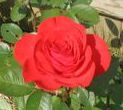
Roses may permeate our consciousness because of their persistence. A rose bush thought to be 1,000 years old grows up the side of the Hildesham Cathedral in Germany. The cathedral, and the rose bush, were destroyed by Allied bombs during World War II, but new branches grew back from the roots.
Roses are symbolic for us in many other ways. We’re often urged to “stop and smell the roses”, suggesting that we’re too preoccupied with work and other pursuits to notice the fragrance of the flowers in our path. A dozen red roses symbolize true love, or at least a hearty infatuation.
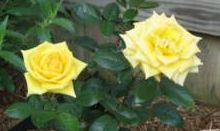
The rose inspires us with its beauty, its fragrance and its delicacy. We may not be able to articulate the impact of the rose on our senses, but poets from Sappho to William Blake to Emily Dickinson have committed their impressions to verse. Even Dorothy Parker reflected on the rose in her own unique style.
“One Perfect Rose” by Dorothy Parker
A single flow’r he sent me, since we met.
All tenderly his messenger he chose;
Deep-hearted, pure, with scented dew still wet –
One perfect rose.
I knew the language of the floweret;
‘My fragile leaves,’ it said, ‘his heart enclose.’
Love long has taken for his amulet
One perfect rose.
Why is it no one ever sent me yet
One perfect limousine, do you suppose?
Ah no, it’s always just my luck to get
One perfect rose.
But we don’t usually think about roses as part of a meal. Mary and I have tried many varieties of edible flowers – nasturtiums, squash blossoms, borage blossoms, and even dandelions. But we’ve never eaten roses, until now.
One of the delights of using our Guidebook is that we can open it at random and within a page or two find something new that looks interesting to try. That’s how we arrived at rose petals. Mary found the article on rose petals on page 386. Mimi Sheraton notes that “the world’s most famous and abundant edible roses” come from “the Valley of the Roses, at the foot of Bulgaria’s Rhodope mountains”. In Southern Indiana, where we live, our choices for Bulgarian food are very limited. But a few minutes and an Amazon search later, Mary had rose petal jelly on the way to our kitchen. She bought “Confit de Rose” – rose petal jelly. Granted, it was made in France, but that’s a good starting point.
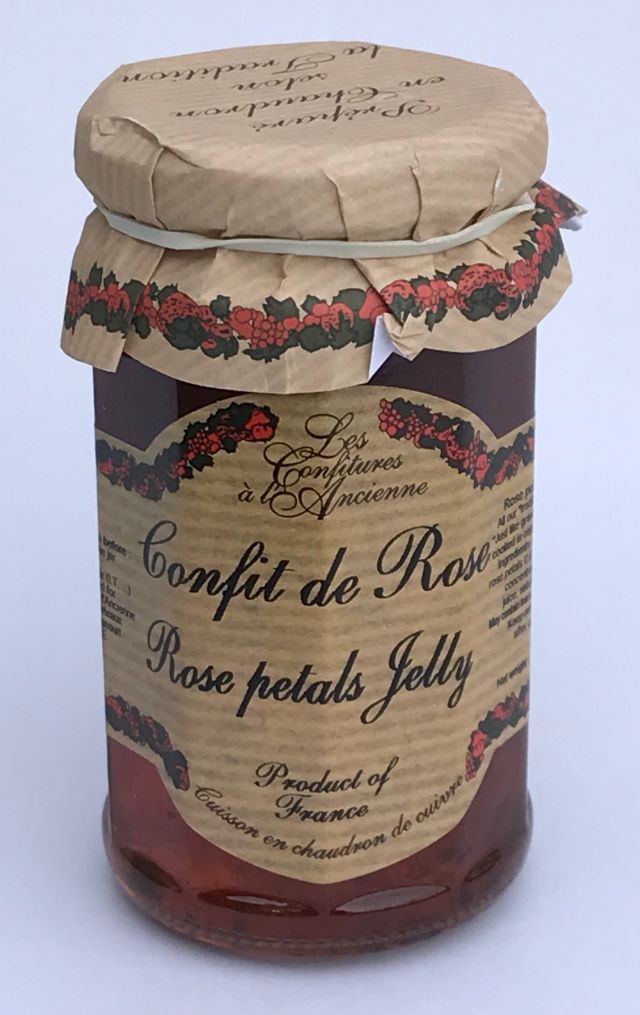
We tried the jelly over several days. We ate it on fresh-baked raisin scones. We spread it with goat cheese on a rustic bread. We mixed it in vanilla yogurt. In every case, the result was the same = we thought it was good, but not remarkable.
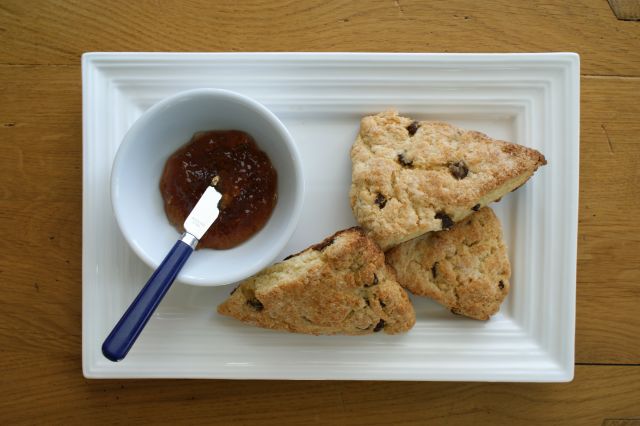
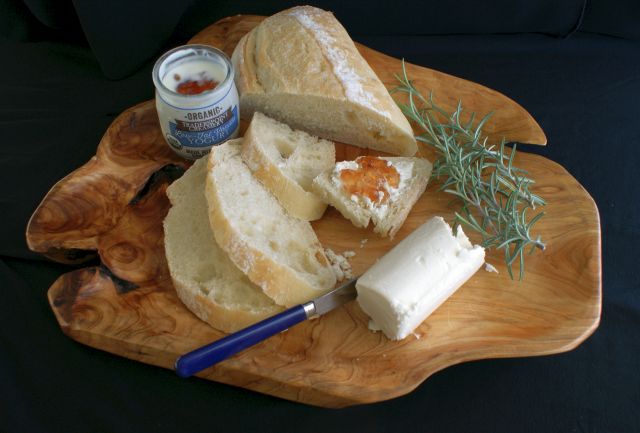
This rose petal jelly is very sweet. The taste of roses is subtle and fleeting. We could detect it in the first bite or two, but never really tasted it again. It was a pleasant complement to the scones and the bread, but did not offer a distinctive taste. We liked it best mixed in the yogurt, but again, were not sure that it was better than other jellies.
All in all, we’re happy that we’ve tried it, and will probably try it again. It seems unfair to dismiss it based on only one tasting. (I certainly would not be enjoying broccolli, wine or scotch today if I’d given up so easily!) Gertrude Stein famously wrote “Rose is a rose is a rose is a rose”. Having looked at, and smelled, dozens of roses, I don’t think they are all alike. I’ll give the same benefit of the doubt to rose jelly.
Have you tried rose petal jelly? If so, leave us a comment and tell us your impressions.

Fascinating and well done. Not your everyday blog. However, rose jelly is not high on my list of must haves.